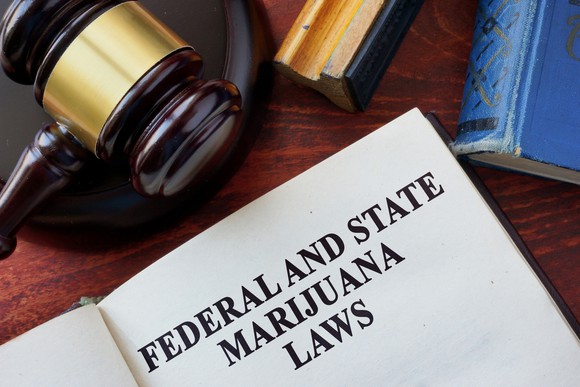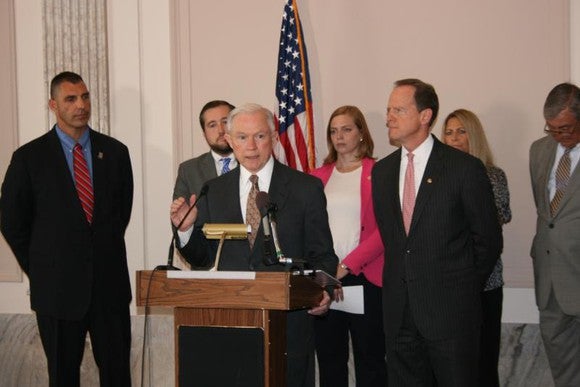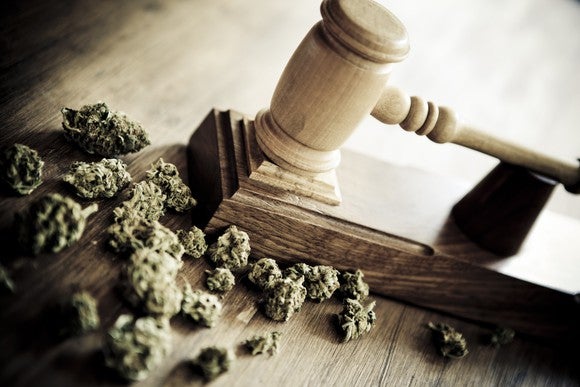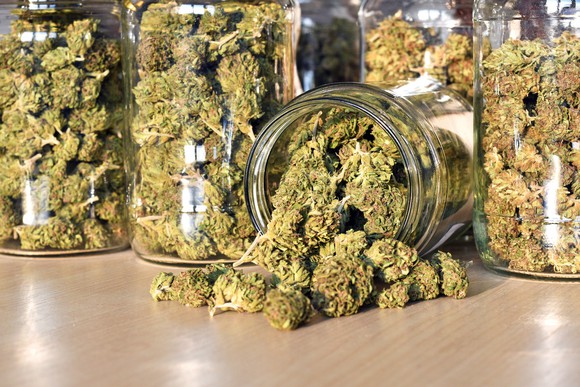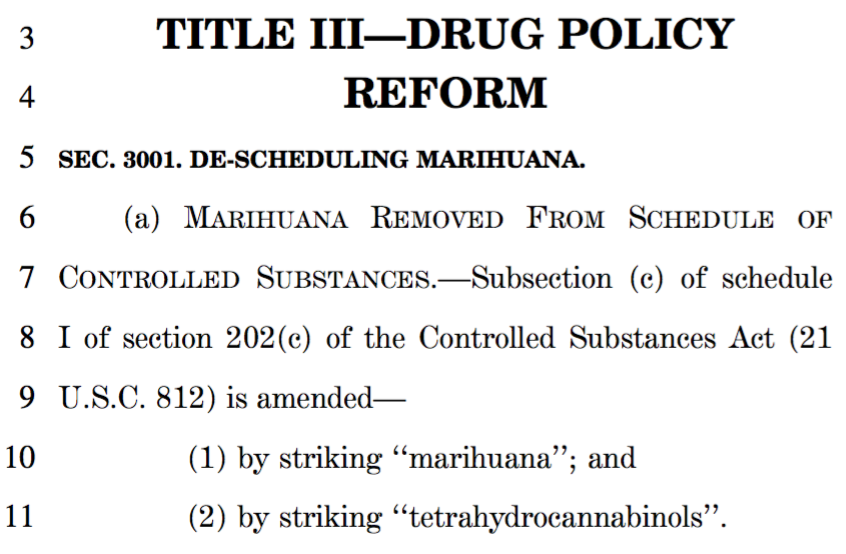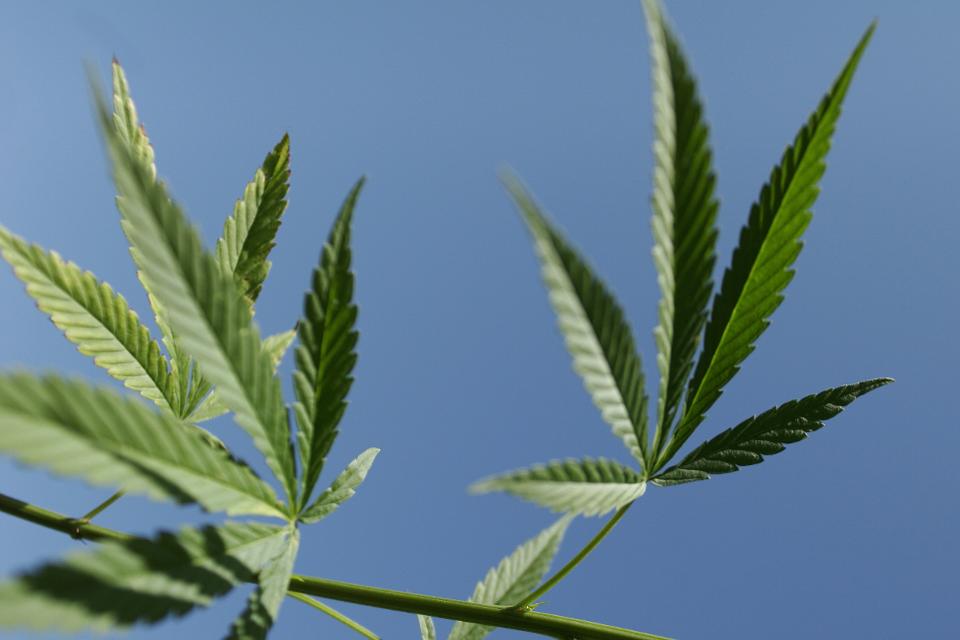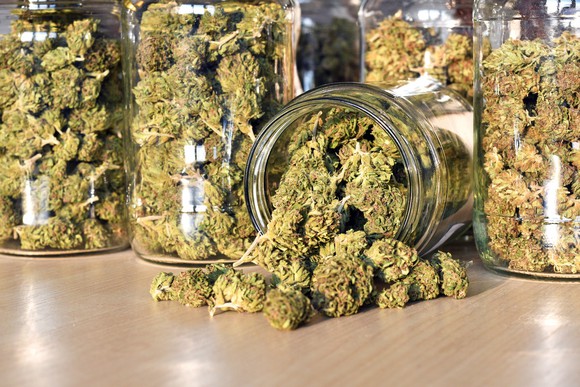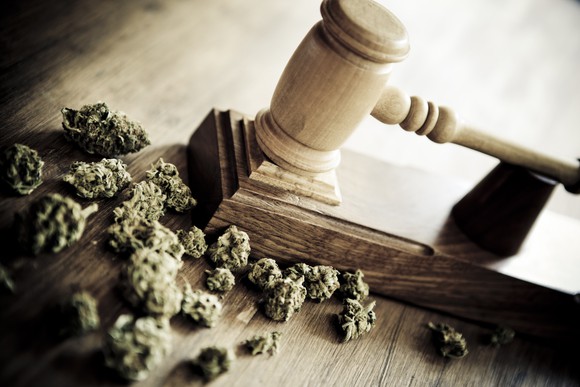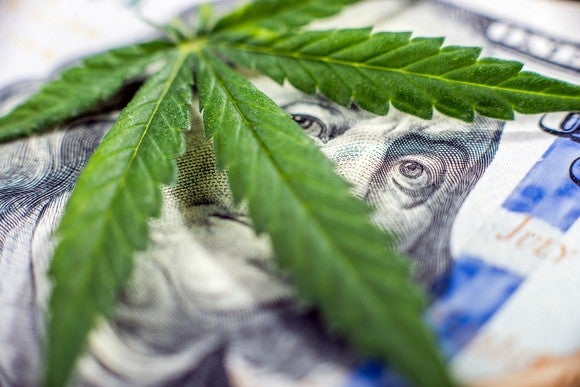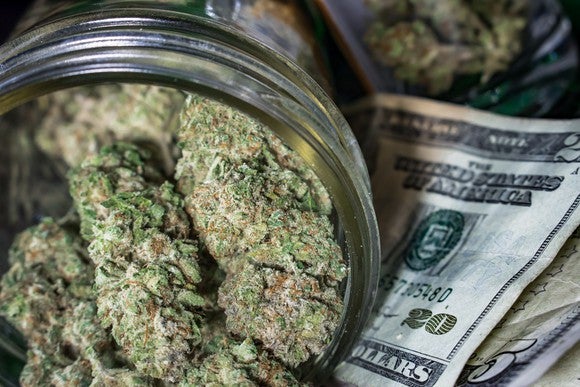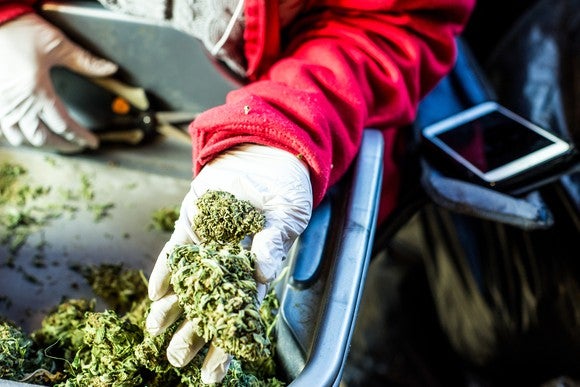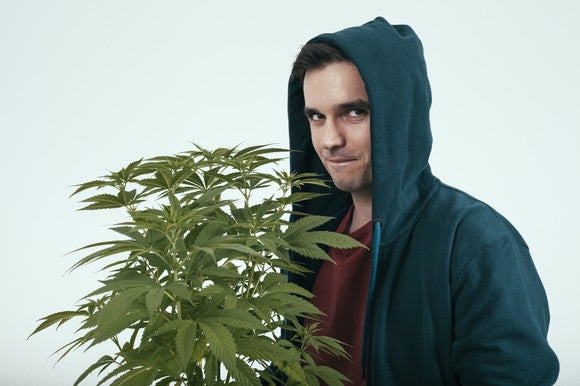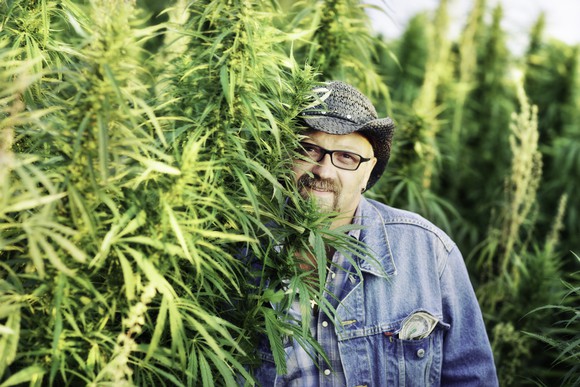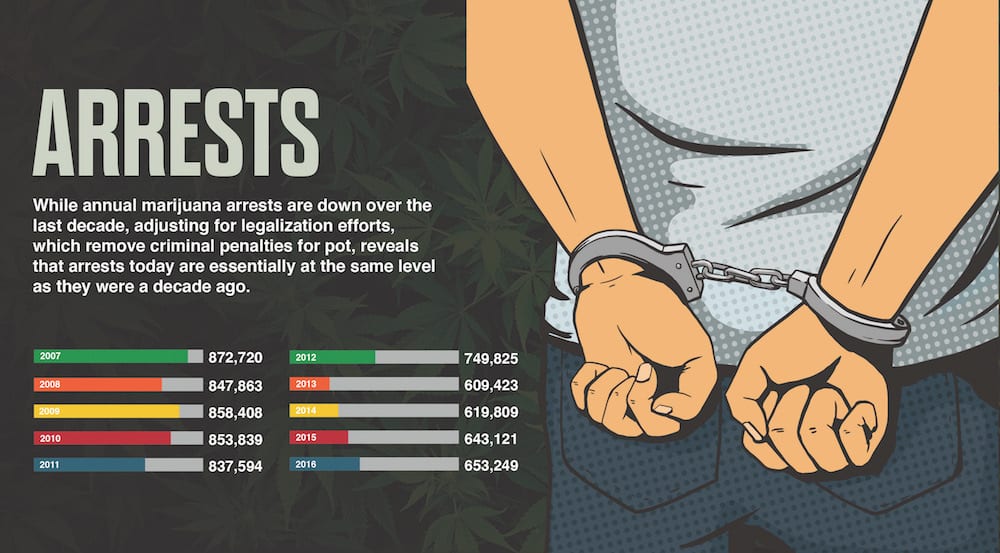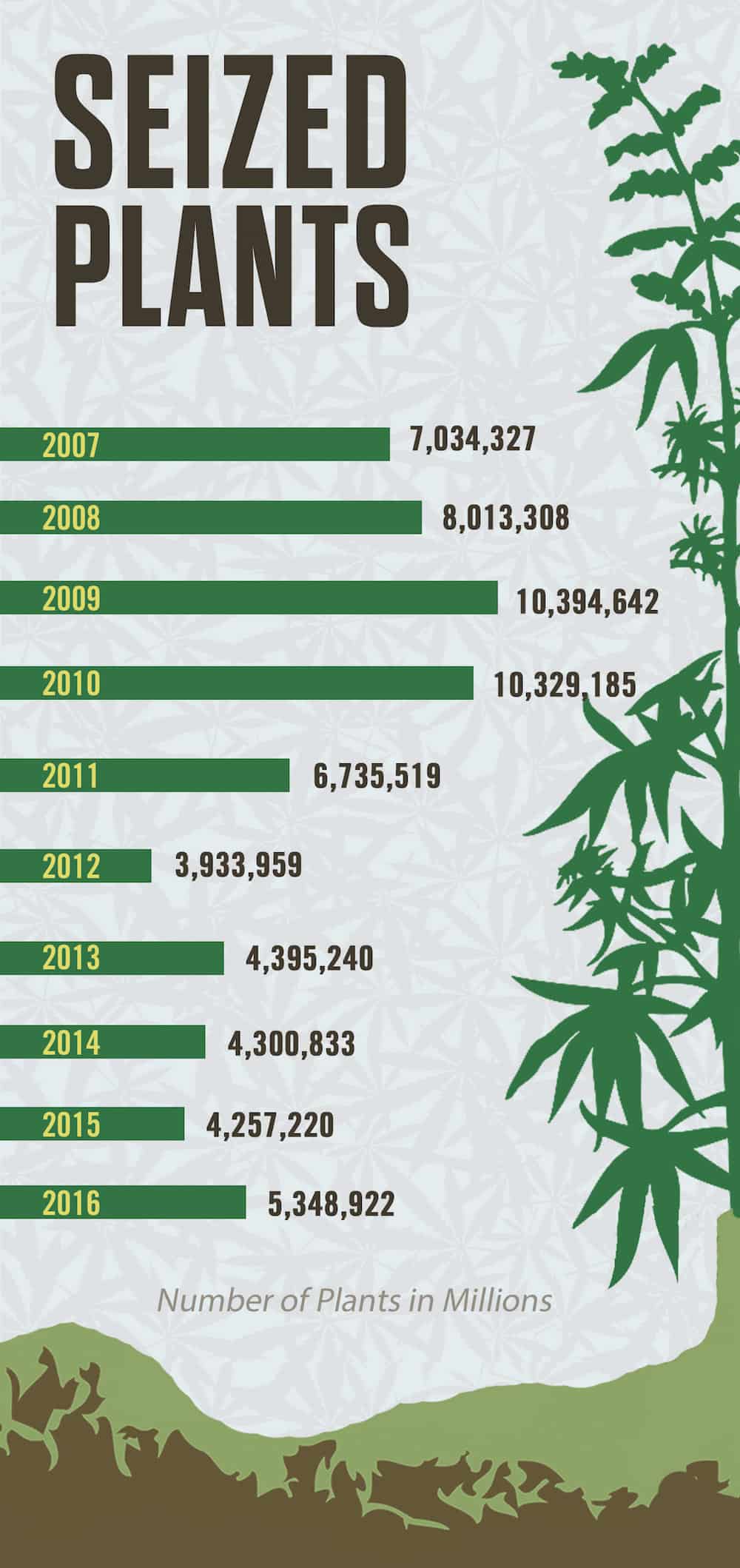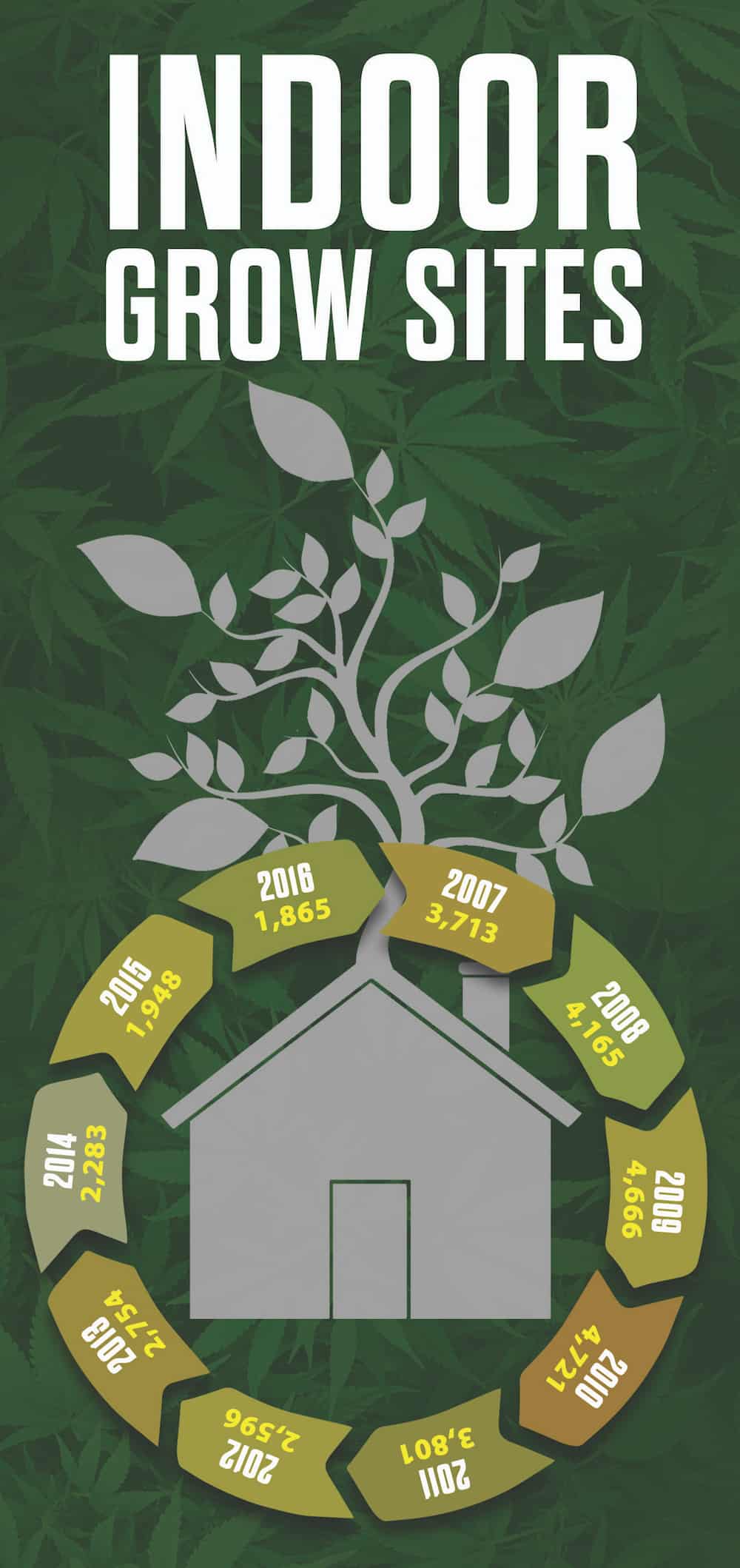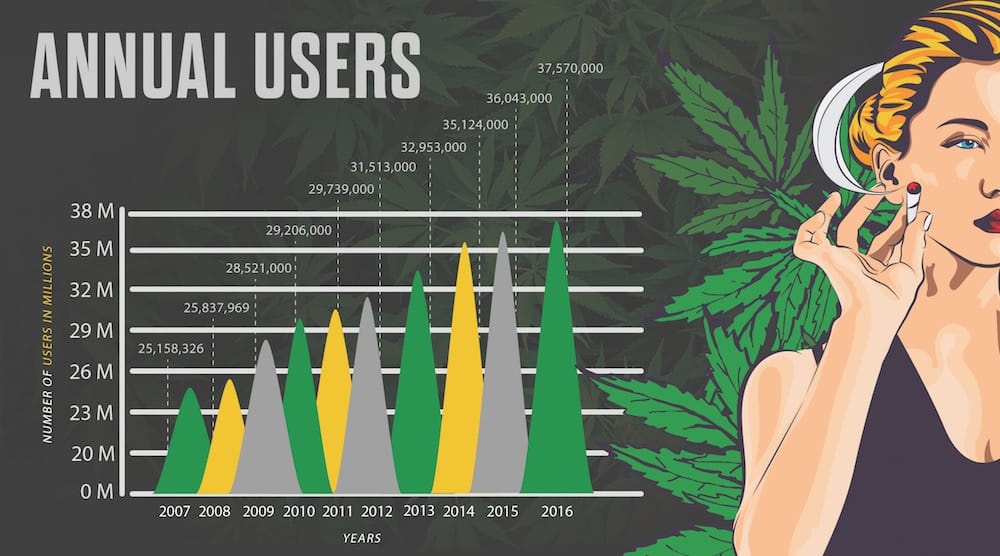Baron23
Well-Known Member
Medical marijuana used pot's emotional connection to spread nationally
DENVER — Twenty years after California first legalized marijuana use for sick people, "medical marijuana" has become a billion-dollar business so cloaked in emotion that it would be virtually impossible to dismantle.
Without any real national discussion, most Americans now live where it's possible to get pot for pain, nausea or other ailments. Thirty states already permit some form of medical cannabis use, and several more are poised to approve it this fall — a sign this now-beloved industry has dramatically altered public opinion among both conservatives and liberals.
“I don’t care if you’re a Republican or a Democrat — I don’t care who you are,” said Kevin Murphy, the CEO of Acreage Holdings, a medical marijuana firm with operations in 11 states. “If you have a brother dying of cancer, and this is the only thing that brings him comfort … you are an advocate.”
Millions of Americans believe that marijuana helps them. They say it relieves pain, improves their appetite, eases the side effects of chemotherapy. Others swear by it for helping with PTSD or anxiety or seizures. Millions use it just to sleep better.
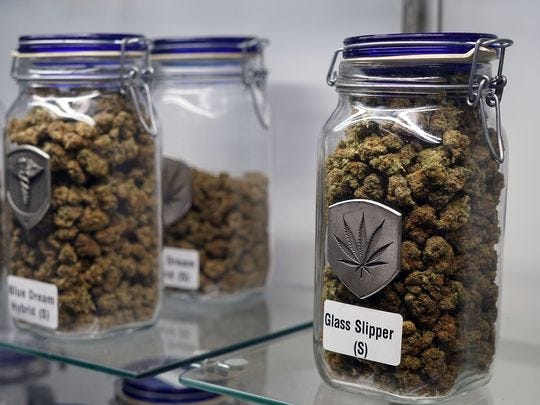
Glass jars of marijuana offered for sale at the Medicine Man cannabis dispensary in Denver. (Photo: Trevor Hughes, USA TODAY)
But while emotions have helped drive medical marijuana legalization, it's simultaneously become a big business. As many as 135,000 people are working in the medical pot business across the country, generating $1.8 billion in income taxes and at least $300 million in state sales taxes last year, according to industry expert Matt Karnes of GreenWave Advisors.
Among the most recent high-profile additions to the medical marijuana industry: Former House Speaker John Boehner, who is joining the Acreage board after decades of cannabis opposition.
Those workers are buying and renting property, spending their salaries, and, also, paying a significantly higher tax rate than traditional workers, thanks to an IRS ruling that treats marijuana businesses like drug traffickers.
All that has happened with a Congress that's only taken tentative steps to recognize the industry's popularity and power, and an executive branch that's refused to acknowledge that millions of Americans regularly consume marijuana in lieu of prescription medicines.
The Potcast, a USA TODAY Network podcast, tells the story of America’s shifting attitude toward legalizing pot:
Lawmakers in March barred the federal government from interfering with any state-regulated medical marijuana system but there's been no movement on plans in Congress to lower its classification as a Schedule 1 drug.
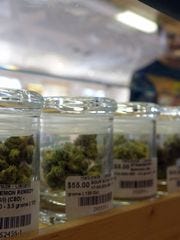
Jars of marijuana sit away customers at Harborside Health Center in Oakland, Calif. (Photo: Trevor Hughes, USA TODAY)
“As an industry, we have the opportunity to really get it right," said Jen Lujan of the California-based medical marijuana company Eaze. Lujan founded "Weed for Good," which connects low-income sick people with medical-grade cannabis.
"We have the opportunity to de-stigmatize it, especially on the social impact side."
Marijuana has long been present in the United States, and its use cuts across social and economic backgrounds. An estimated 24 million Americans ages 12 and older reported using cannabis in the past 30 days, according to a 2016 study by the U.S. Department of Health and Human Services.
Of those, 90% said their primary use was recreational, 10% said it was only for medical reasons, and 36% said they were using it for both.
Critics say statistics like that prove medical marijuana systems have been exploited by young men who claim medical necessity to get legal pot.
Five states, including Utah, are considering whether to permit medical marijuana this fall. In announcing his opposition to granting broad access to medical marijuana in Utah, Gov. Gary Herbert said he worried allowing medical pot "would potentially open the door to recreational use."
It's an obvious concern for marijuana skeptics because every state that has legalized recreational pot started out permitting only medical cannabis, and then expanded once people got comfortable. It's a pattern repeated from Colorado to California and from Maine to Nevada.
And it's a strategy not lost on Kevin Sabet, who is perhaps the country's best-known legalization opponent. Sabet, who runs Smart Approaches to Marijuana, is a former senior advisor to the Office of National Drug Control Policy and a fierce critic of what he's dubbed "Big Marijuana."
“They effectively changed the face of marijuana from a loser in a basement to your sick grandmother,” Sabet said. “It was, frankly, a brilliant PR move.”
Groups like Sabet's worry the nation has moved too quickly when it comes to permitting widespread marijuana use, especially when it's wrapped in the cloak of "medicine," which is routinely how medical marijuana advocates describe what they sell.
But those products haven't gone through the same federal testing as real prescription medicine or even over-the-counter drugs like Advil.
In most cases, users need only a doctors’ note saying cannabis use would help them with the pain of cancer or nausea, leaving it up to the user and whomever is selling the cannabis to decide how much to consume.
Under federal law, doctors cannot directly prescribe marijuana, because it’s still illegal, although they can prescribe marinol, a synthetic version of THC that users say is far less effective and much more expensive than real cannabis.
A large reason for the lack of studies are the heavy restrictions that come with being considered a Schedule 1 drug. That list also includes heroin, but not oxycodone or other opiates, which medical marijuana advocates point out are far more dangerous to users.
And a small number of medically accepted studies have shown marijuana appears to be an effective treatment for chronic pain, nausea and symptoms of multiple sclerosis.

A worker at Harborside Health Center in Oakland, Calif., packages marijuana cigarettes -- joints -- for customers. Harborside's founder recruits his staff from the city, offering good-paying jobs and health insurance. (Photo: Trevor Hughes, USA TODAY)
However, the National Academies of Sciences, Engineering and Medicine also warned of dangers from marijuana use: an increased risk of car crashes, lower birth weight babies and problems with memory and attention. It found strong connections between heavy cannabis use and the development of schizophrenia and other psychoses.
That's enough to give Deni Carise pause. An addiction expert and chief scientific officer at Recovery Centers of America, Carise has no significant objection to medical marijuana use.
She does, however, object to the industry that's sprung up around pot, an industry filled with people who evangelize about the plant's benefits without any solid scientific backing.
“The reality is that whenever something becomes cheaper and more available, more people are going to use it," she said.
Carise said it's highly unlikely the FDA would ever approve smoked marijuana for personal use, given the country's experience with tobacco, which was once also recommended for a variety of ailments, including stutters and breathing difficulty.
Medical marijuana advocates, unsurprisingly, reject any comparisons to the tobacco industry. While smoking cannabis is the most obvious way to consume it, entrepreneurs unfettered by government regulation have figured out how to infuse it into foods and drinks, turn it into nanoparticles, or extract it into oils and tinctures.
With hundreds of years of use behind it, marijuana may not be well studied by scientists, but it's certainly been tried in almost every conceivable way.
But because there's no federal clarity, the states have been left to their own devices, forcing local officials to repeatedly reinvent the wheel to suit local sensibilities. At this point, it's still illegal to move medical marijuana between neighboring California and Nevada, even though both states permit it
“We’re regulated somewhere between alcohol and nuclear waste. In many ways, they don’t even regulate pharmaceuticals as much," said Michael Ray, the CEO of Oakland., Calif-based Bloom Farms, which sells medical marijuana.
Like many of America's marijuana entrepreneurs, Ray is willing to risk federal prosecution because he believes so strongly in the benefits of marijuana — and in the business opportunities that accompany it.
“Everything changes if the federal government decides to de-schedule," he said. "At the end of the day, I would love to see cannabis treated like any other industry. And that day will come. The big question mark is when.”
DENVER — Twenty years after California first legalized marijuana use for sick people, "medical marijuana" has become a billion-dollar business so cloaked in emotion that it would be virtually impossible to dismantle.
Without any real national discussion, most Americans now live where it's possible to get pot for pain, nausea or other ailments. Thirty states already permit some form of medical cannabis use, and several more are poised to approve it this fall — a sign this now-beloved industry has dramatically altered public opinion among both conservatives and liberals.
“I don’t care if you’re a Republican or a Democrat — I don’t care who you are,” said Kevin Murphy, the CEO of Acreage Holdings, a medical marijuana firm with operations in 11 states. “If you have a brother dying of cancer, and this is the only thing that brings him comfort … you are an advocate.”
Millions of Americans believe that marijuana helps them. They say it relieves pain, improves their appetite, eases the side effects of chemotherapy. Others swear by it for helping with PTSD or anxiety or seizures. Millions use it just to sleep better.
Glass jars of marijuana offered for sale at the Medicine Man cannabis dispensary in Denver. (Photo: Trevor Hughes, USA TODAY)
But while emotions have helped drive medical marijuana legalization, it's simultaneously become a big business. As many as 135,000 people are working in the medical pot business across the country, generating $1.8 billion in income taxes and at least $300 million in state sales taxes last year, according to industry expert Matt Karnes of GreenWave Advisors.
Among the most recent high-profile additions to the medical marijuana industry: Former House Speaker John Boehner, who is joining the Acreage board after decades of cannabis opposition.
Those workers are buying and renting property, spending their salaries, and, also, paying a significantly higher tax rate than traditional workers, thanks to an IRS ruling that treats marijuana businesses like drug traffickers.
All that has happened with a Congress that's only taken tentative steps to recognize the industry's popularity and power, and an executive branch that's refused to acknowledge that millions of Americans regularly consume marijuana in lieu of prescription medicines.
The Potcast, a USA TODAY Network podcast, tells the story of America’s shifting attitude toward legalizing pot:
Lawmakers in March barred the federal government from interfering with any state-regulated medical marijuana system but there's been no movement on plans in Congress to lower its classification as a Schedule 1 drug.
Jars of marijuana sit away customers at Harborside Health Center in Oakland, Calif. (Photo: Trevor Hughes, USA TODAY)
“As an industry, we have the opportunity to really get it right," said Jen Lujan of the California-based medical marijuana company Eaze. Lujan founded "Weed for Good," which connects low-income sick people with medical-grade cannabis.
"We have the opportunity to de-stigmatize it, especially on the social impact side."
Marijuana has long been present in the United States, and its use cuts across social and economic backgrounds. An estimated 24 million Americans ages 12 and older reported using cannabis in the past 30 days, according to a 2016 study by the U.S. Department of Health and Human Services.
Of those, 90% said their primary use was recreational, 10% said it was only for medical reasons, and 36% said they were using it for both.
Critics say statistics like that prove medical marijuana systems have been exploited by young men who claim medical necessity to get legal pot.
Five states, including Utah, are considering whether to permit medical marijuana this fall. In announcing his opposition to granting broad access to medical marijuana in Utah, Gov. Gary Herbert said he worried allowing medical pot "would potentially open the door to recreational use."
It's an obvious concern for marijuana skeptics because every state that has legalized recreational pot started out permitting only medical cannabis, and then expanded once people got comfortable. It's a pattern repeated from Colorado to California and from Maine to Nevada.
And it's a strategy not lost on Kevin Sabet, who is perhaps the country's best-known legalization opponent. Sabet, who runs Smart Approaches to Marijuana, is a former senior advisor to the Office of National Drug Control Policy and a fierce critic of what he's dubbed "Big Marijuana."
“They effectively changed the face of marijuana from a loser in a basement to your sick grandmother,” Sabet said. “It was, frankly, a brilliant PR move.”
Groups like Sabet's worry the nation has moved too quickly when it comes to permitting widespread marijuana use, especially when it's wrapped in the cloak of "medicine," which is routinely how medical marijuana advocates describe what they sell.
But those products haven't gone through the same federal testing as real prescription medicine or even over-the-counter drugs like Advil.
In most cases, users need only a doctors’ note saying cannabis use would help them with the pain of cancer or nausea, leaving it up to the user and whomever is selling the cannabis to decide how much to consume.
Under federal law, doctors cannot directly prescribe marijuana, because it’s still illegal, although they can prescribe marinol, a synthetic version of THC that users say is far less effective and much more expensive than real cannabis.
A large reason for the lack of studies are the heavy restrictions that come with being considered a Schedule 1 drug. That list also includes heroin, but not oxycodone or other opiates, which medical marijuana advocates point out are far more dangerous to users.
And a small number of medically accepted studies have shown marijuana appears to be an effective treatment for chronic pain, nausea and symptoms of multiple sclerosis.
A worker at Harborside Health Center in Oakland, Calif., packages marijuana cigarettes -- joints -- for customers. Harborside's founder recruits his staff from the city, offering good-paying jobs and health insurance. (Photo: Trevor Hughes, USA TODAY)
However, the National Academies of Sciences, Engineering and Medicine also warned of dangers from marijuana use: an increased risk of car crashes, lower birth weight babies and problems with memory and attention. It found strong connections between heavy cannabis use and the development of schizophrenia and other psychoses.
That's enough to give Deni Carise pause. An addiction expert and chief scientific officer at Recovery Centers of America, Carise has no significant objection to medical marijuana use.
She does, however, object to the industry that's sprung up around pot, an industry filled with people who evangelize about the plant's benefits without any solid scientific backing.
“The reality is that whenever something becomes cheaper and more available, more people are going to use it," she said.
Carise said it's highly unlikely the FDA would ever approve smoked marijuana for personal use, given the country's experience with tobacco, which was once also recommended for a variety of ailments, including stutters and breathing difficulty.
Medical marijuana advocates, unsurprisingly, reject any comparisons to the tobacco industry. While smoking cannabis is the most obvious way to consume it, entrepreneurs unfettered by government regulation have figured out how to infuse it into foods and drinks, turn it into nanoparticles, or extract it into oils and tinctures.
With hundreds of years of use behind it, marijuana may not be well studied by scientists, but it's certainly been tried in almost every conceivable way.
But because there's no federal clarity, the states have been left to their own devices, forcing local officials to repeatedly reinvent the wheel to suit local sensibilities. At this point, it's still illegal to move medical marijuana between neighboring California and Nevada, even though both states permit it
“We’re regulated somewhere between alcohol and nuclear waste. In many ways, they don’t even regulate pharmaceuticals as much," said Michael Ray, the CEO of Oakland., Calif-based Bloom Farms, which sells medical marijuana.
Like many of America's marijuana entrepreneurs, Ray is willing to risk federal prosecution because he believes so strongly in the benefits of marijuana — and in the business opportunities that accompany it.
“Everything changes if the federal government decides to de-schedule," he said. "At the end of the day, I would love to see cannabis treated like any other industry. And that day will come. The big question mark is when.”


